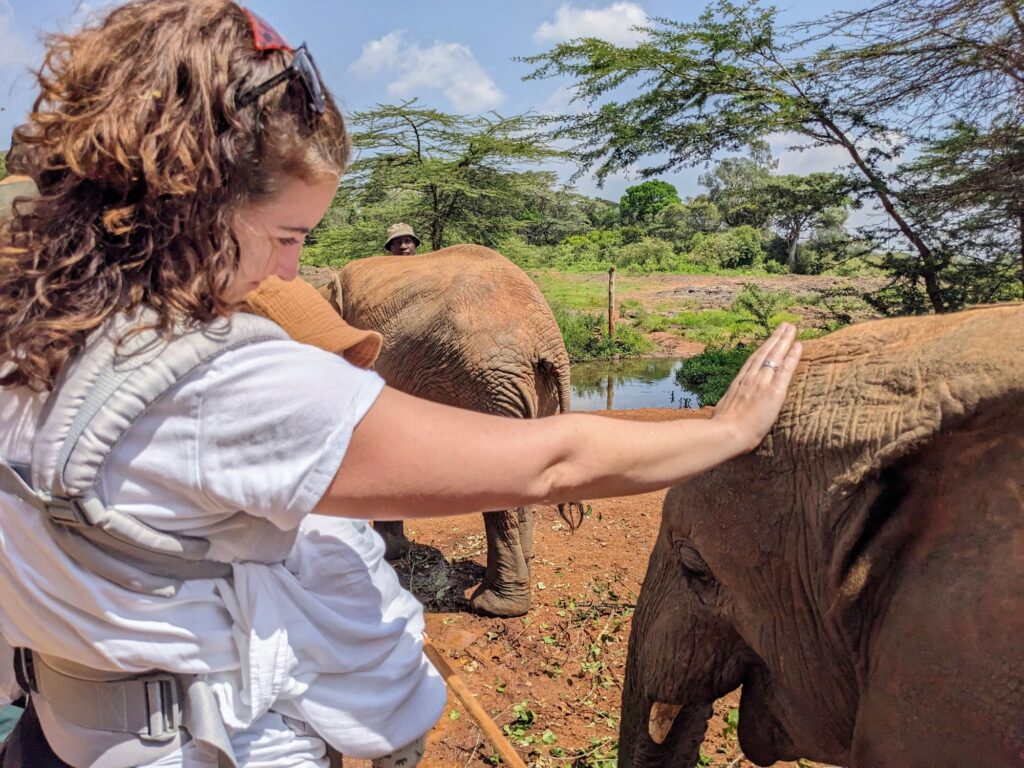
Picture swaying palm trees, flowers in fuchsias, purples and cherry reds, avocados plucked from the leaf. In the evenings, monkeys shimmy down trees to raid the avocado supply – at least until the dog chases them away. The sun shines every day, and the temperature is 75-80F (22-25C). No real decision about clothing, just a T-shirt and shorts and sandals. And to top it off, picture a delighted grandmother playing with her 7-month-old grandson—a scene right out of Hallmark, actually.
That pretty much summed up my life in the month of December, when I visited my daughter, son-in-law and their beautiful baby boy in Nairobi, Kenya. Of course, there is more to it than I’ve described. A national park where wildlife roams within view of the city skyline. An urban forest with walking and biking trails. Leafy suburbs with gated houses where reside predominantly expats. Insane, insane, insane traffic, with cars, matutus (passenger vans), trucks, boda-bodas (motorcycle taxis), vying for the smallest opening in defiance of any courtesy, let alone laws. A Central Business District (downtown) I was told not to visit on my own – if for no other reason than the crush of people there. And on. and on…
So you know, I was far less a tourist than I was just a grandmother visiting her daughter’s family. We/I didn’t venture out a great deal; but there were a few excursions that I’d like to tell you about. And also a few tips I learned along the way.
Getting to Kenya is not an easy or inexpensive proposition. Expect to spend $1,000+/- from the states, in the region of €680-900 in Europe, and to layover somewhere. I took Emirates Airlines from Dublin, with a short layover each way in Dubai. If you head out to safari from Nairobi, my daughter says to budget another $/€2,000 anyway. So, altogether not for the faint of financial heart. But you really are transported to another world. Africa is just in a class by itself.
(My favorite airport moment: on the way home, I arrived at the airport in Dubai around 5am, left around 7am. As I’m waiting for my flight, I hear the call to prayer over the loudspeaker, sandwiched on either side by Christmas music. Now THERE’S a cultural potpourri!)
- VISA TIP: Everybody coming into Kenya needs a visa, so don’t neglect that particular pre-visit item on the checklist. However, the process was easy and extremely quick. Go to https://www.etakenya.go.ke/en and fill out the online application. I heard back within a week or so that it was approved, with a link to the visa itself. Tourist visas last for three months.
Nairobi National Park: If you’re spending any time in Nairobi at all, I highly recommend a visit to Nairobi National Park – a way to go on safari without going on safari. This relatively small park, only 117km or 45 square miles, borders the Kitengela Plains to the south so animals have a wide roaming radius. It is the only place in the world where a capital city shares a boundary with a wildlife sanctuary. The skyline of Nairobi, about 7km away, is everywhere to be seen, across wide swaths of open space where reside 100 animal and 400 bird species.
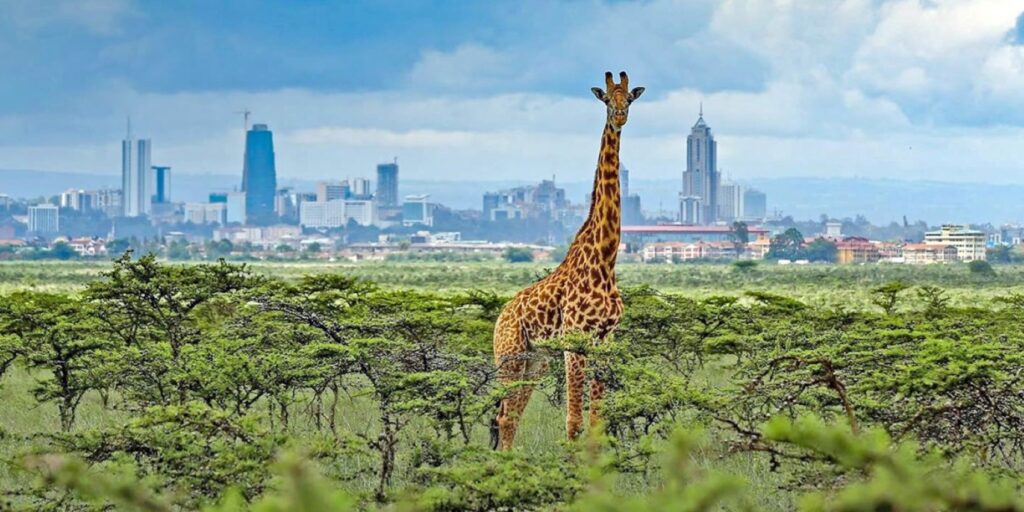
We went mid-morning on a hot day, not an optimal time as animals have finished their breakfast and have found respite from the sun. Still, we saw ostriches, giraffes, jackals, wildebeests, a lone baboon and more. A friend of Bridget’s toured the park starting at 5am, and saw much more wildlife including lions.
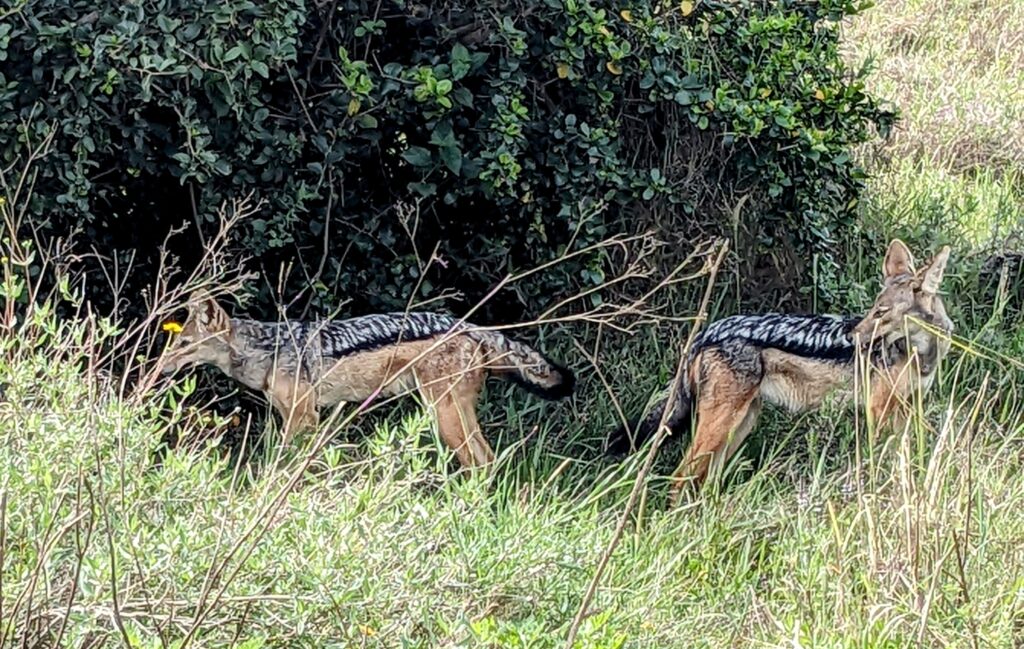
These are black-backed jackals
The cost to get into the park is $43/€41 per adult for nonresidents, which allows access for 24 hours; and bring your passport with you. You may be asked for it.
- PASSPORT TIP: At some point, I just got into the habit of carrying my passport with me, after I ran into a couple of problematic situations. I noticed this in Rwanda, as well. Passports can be used for both identification and proof of visa.
Tucked inside the park is the Orphans’ Project, run by the Sheldrick Wildlife Trust and the most successful orphan elephant rescue and rehabilitation program in the world. From 11 a.m. to noon every day, visitors can view the baby and teenaged elephants at their ‘midday mud bath and milk feed.’ Beforehand, in a fenced-off open area staff laid out a liberal coating of small leafy branches for the elephants to feast on. The youngsters come out of the nearby jungle ready for lunch, which includes drinking from the most enormous baby bottles actually filled with baby formula. As they munch on the branches, some get close enough for visitors to touch. That’s Bridget (and the tip of Flynn’s cap) in the lead photo. I’ll tell you, it’s a trip to touch an elephant. The hide and hair are stiff, and as the saying ‘thick as an elephant’s hide’ suggests, these little guys don’t seem to feel a thing from those human hands. I mean, where else are you ever going to be so close to these majestic creatures?
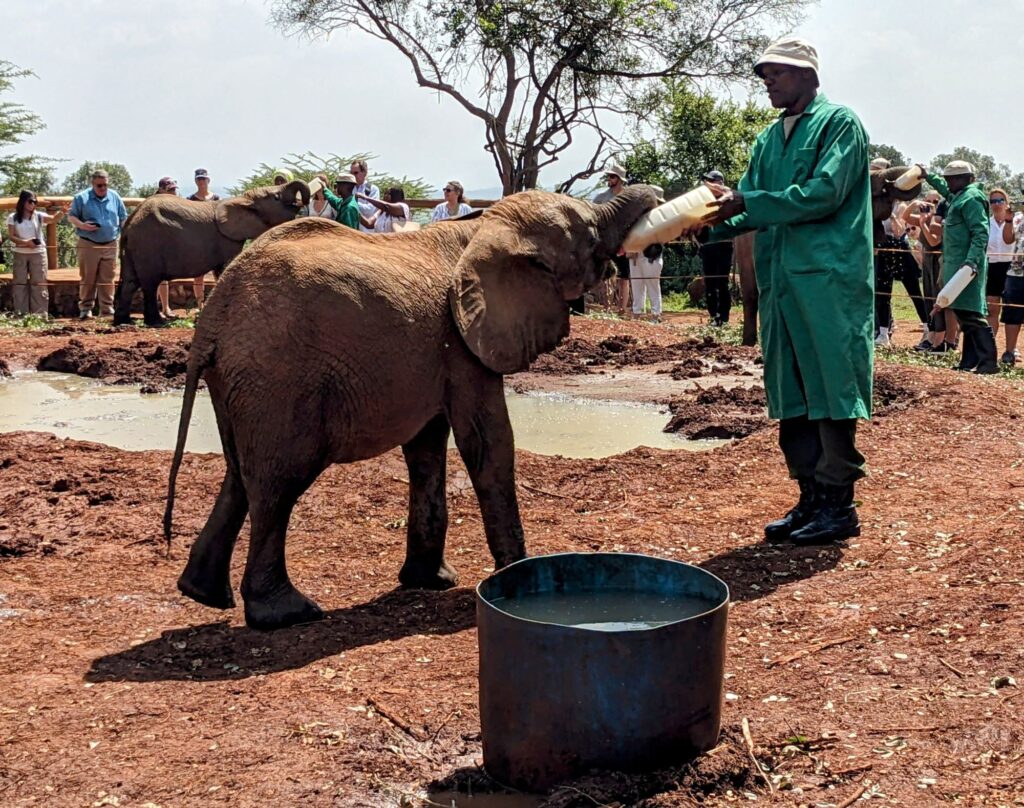
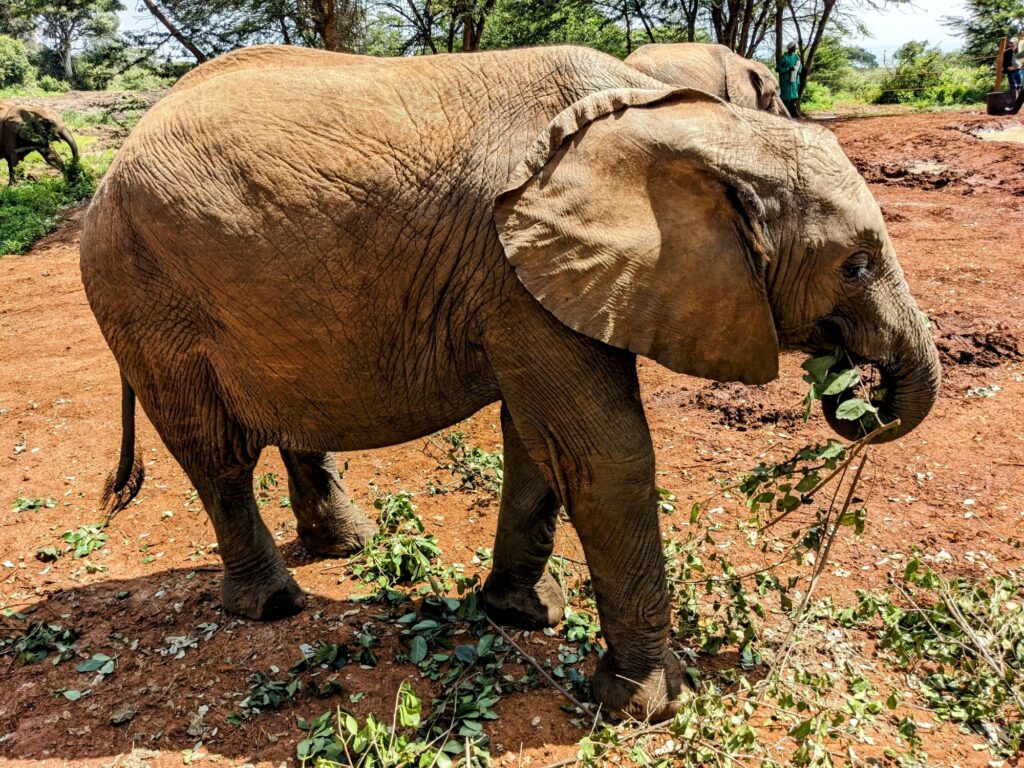
Notice the helper feeding the baby a bottle! Here’s another once munching on the branches.
The entry fee is $20/€19 (this on top of the park fee) and booking in advance is essential to keep numbers to a minimum. The whole day was my belated birthday present. Lucky me! And if you are looking for a cool gift for someone, you can actually adopt an elephant for a year. Visit https://www.sheldrickwildlifetrust.org/orphan
Karura Forest: Yet another cool conserved open space, this one in the city itself, is the Karura Forest. It is 2400 acres in size, and split into two parts. The smaller, Sigria region is a 15-minute walk from my daughter’s house. It has well-marked 3-, 5- and 10km trails through dense woodlands. In fact, those monkeys in Bridget and Tom’s backyard that I talked about earlier reside in the forest, which abuts the property. It was a delight to have such a place so close by. One proviso: try to avoid the forest after an overnight rain. The trails get pretty mushy and slippery, and that red clay is quite challenging to clean from your shoes! The entrance fee for nonresidents is 600 Kenyan shillings – close to $5, €4.50.
(It turns out that Karura Forest is just one of many public open spaces in Nairobi, a point of pride for the city. According to a 2020 report, in addition to Karura, there are two nature reserves, 34 parks and gardens and 99 playgrounds, among other areas.)
Kazuri Bead Factory: I did venture out on my own to visit a few places, and definitely on my to-do list was the Kazuri Bead Factory. I once owned Kazuri earrings, bought many years ago, if I remember correctly, at a small handcraft shop in Norway, Maine. They are long gone, more’s the pity, but when I saw the headquarters were in Nairobi, I decided to check it out. Once you’ve seen Kazuri beads, you won’t mistake them for anything else – handmade beads in bright, high-luster colors.
At this small facility, you can go on a tour and watch as the beads are made from scratch using clay sourced near Mount Kenya. Each woman (they were nearly all women, earning a living wage) had a different task, from shaping the beads to painting them to stringing them. Two nearby kilns twice fire the beads. It’s a fascinating tour. A rather upscale shop sells the finished products, and there’s even a café for a nibble and a coffee or tea.
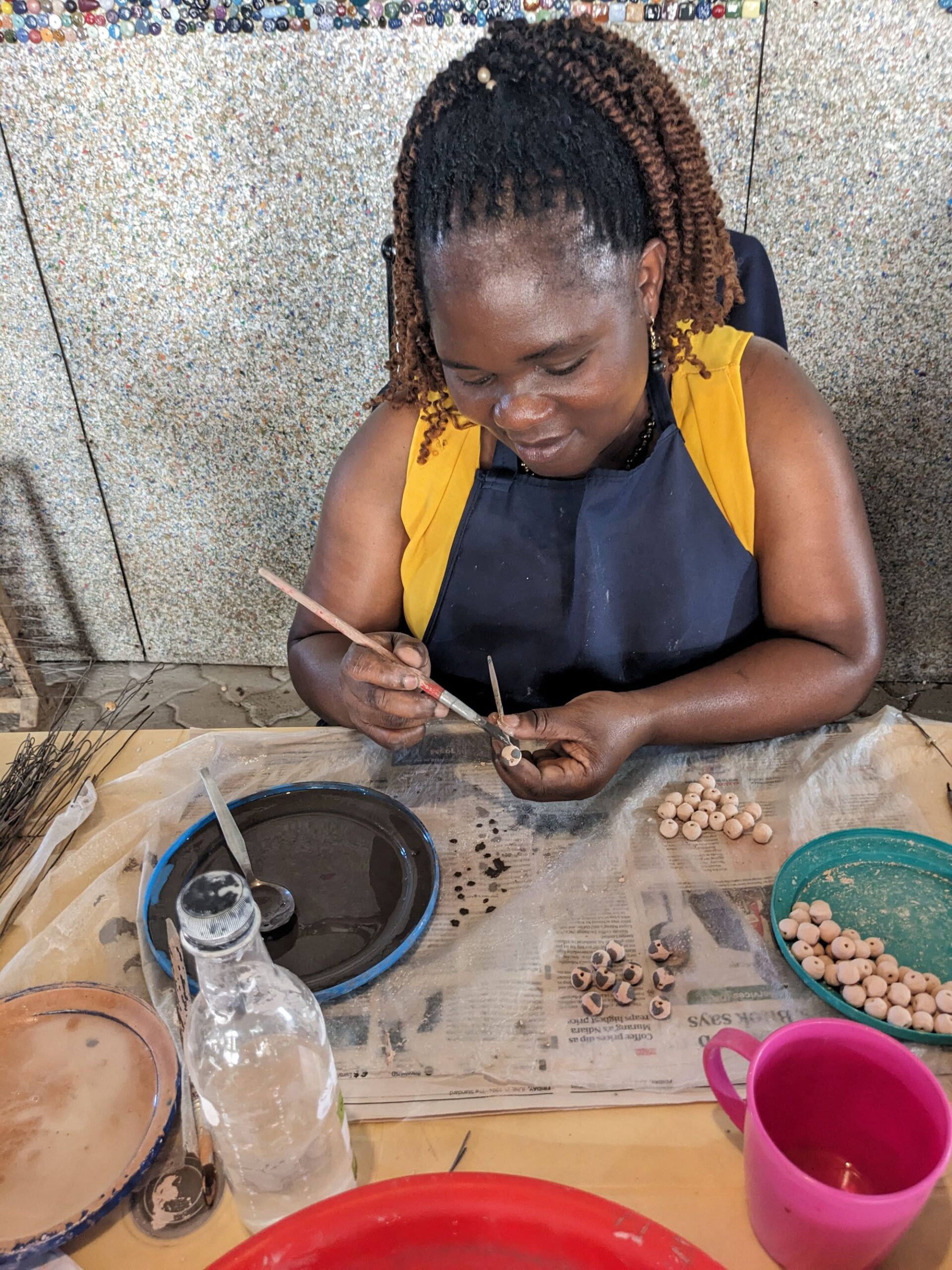
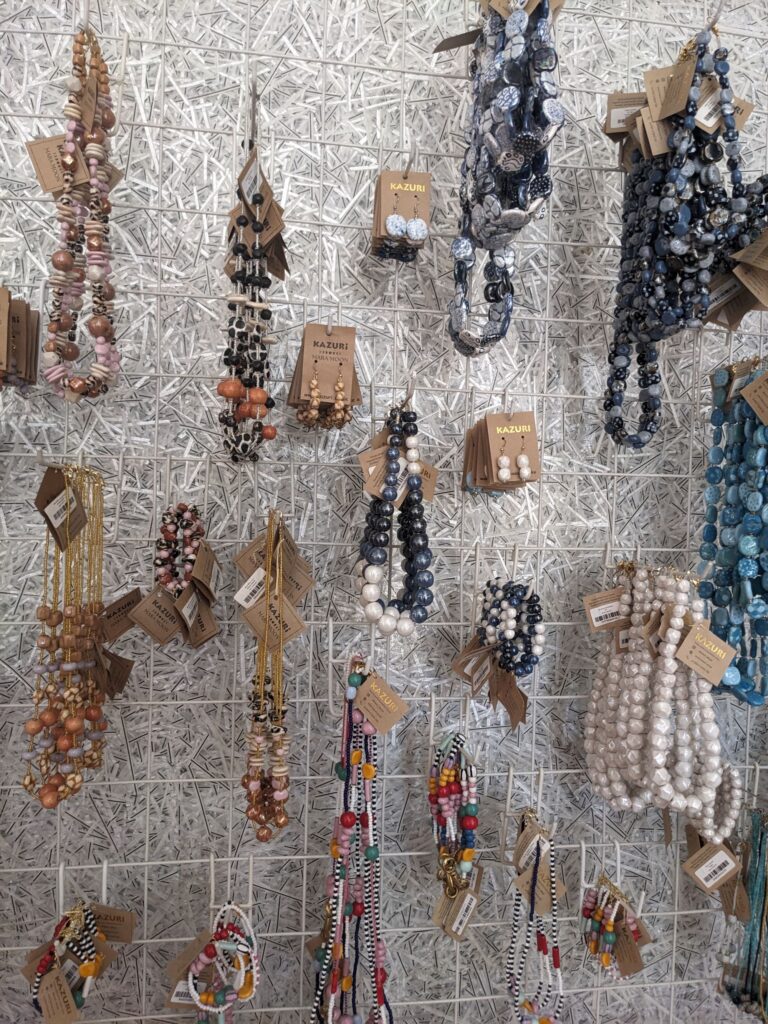

From left: a woman painting beads, one of many walls in the shop, a woman punching a hole through the prepared beads.
Kazuri beads are sold in stores in several European countries, at Ten Thousand Villages stores, as well as online by visiting the website. Ebay and Etsy sell a ton of them, too. The jewelry is not inexpensive, but it is made sustainably, under Fair Trade principles.
- UBER TIP: Ubers are plentiful in Nairobi and apparently are the go-to modes of transport for people who live there. I took ubers to the bead factory and a couple of other places. I found it amusing that you had three different choices: motorcycle, beat-up car and nice car. As a single woman, I’ve always like Uber. I know up front what the cost is and no one can take advantage of me by racking up money taking me round the mulberry bush, so to speak. And I always give the maximum tip online afterward. I chose the nice car option, FYI. For me to go from my daughter’s place on one side of Nairobi to the other side, the cost was about $11 each way.
The Giraffe Center: I was somewhat less than wowed by the Giraffe Center, a short distance outside Nairobi. That said, the center does provide an opportunity to get up close and personal with the very, very cool giraffe. The center specializes in caring for the Rothschild’s giraffe – a subspecies that had almost gone extinct by the mid 20th century. Only 300 currently remain in captivity and in the wild. At the center, visitors get a small cup of food when they enter, then head to a viewing platform where the giraffes are hanging out to partake of your largesse.
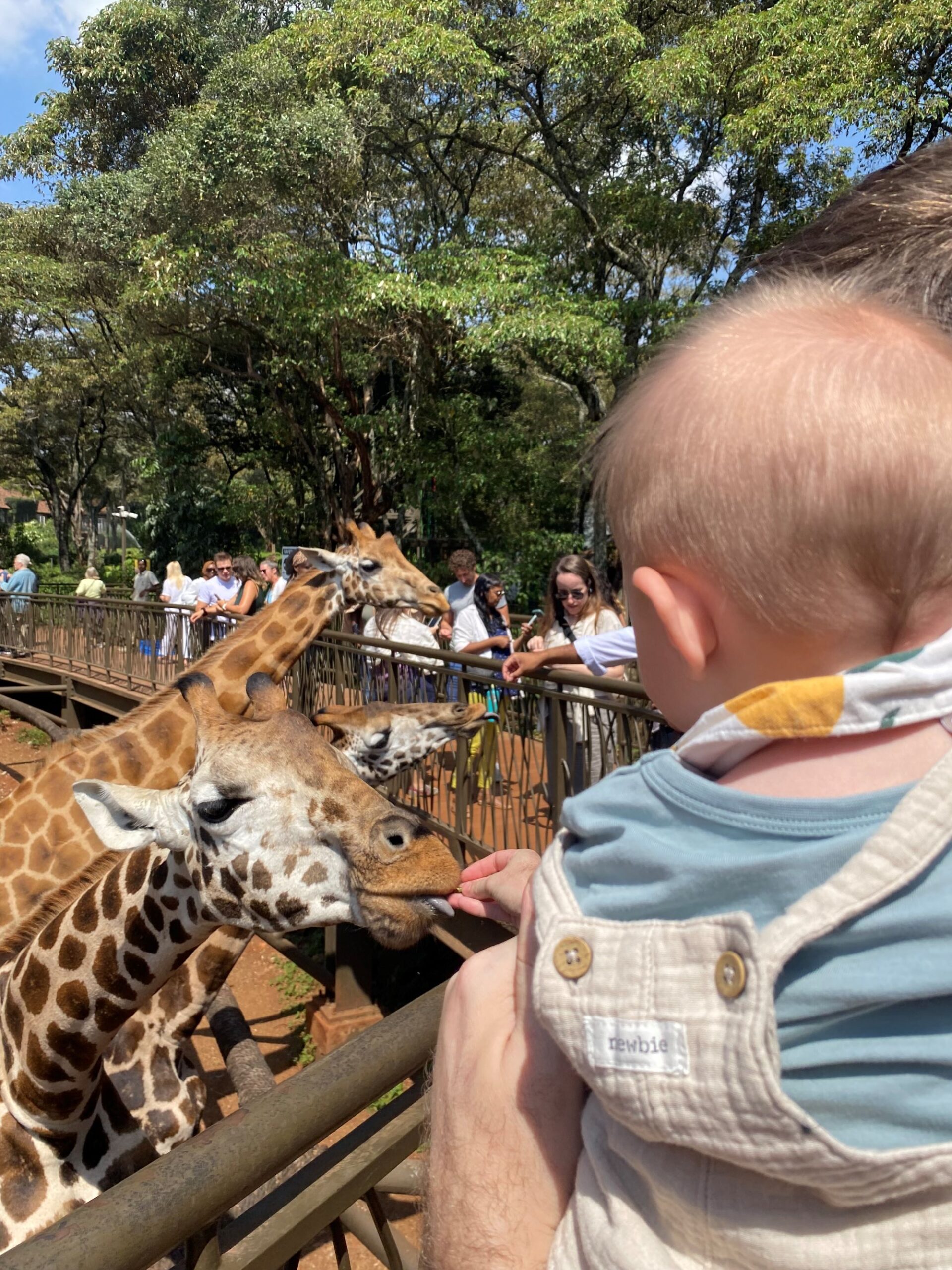
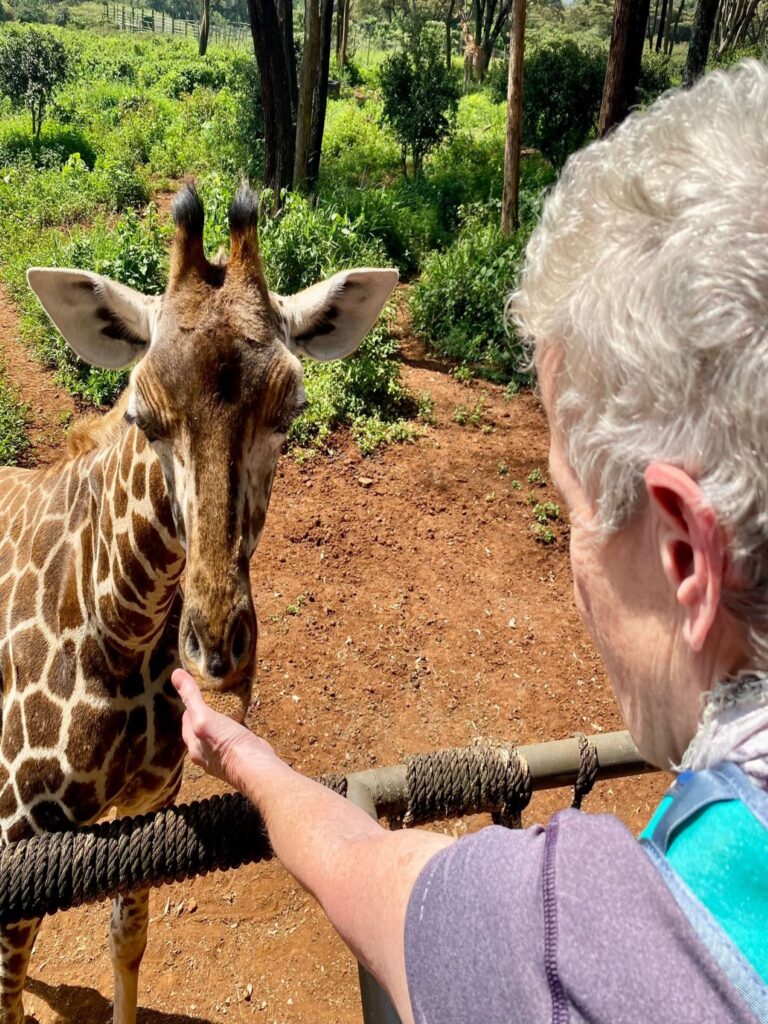
I think my reservations lie in the fact that, unlike the elephant sanctuary where elephants are only in the enclosure 1 hour a day and have natural leaves and branches for food, these giraffes spent the day eating pellets from a revolving door of visitors. Plus the visitors center looked like it hadn’t been upgraded since the place opened 45 years ago. The entry fee is modest, a little less than $12/€11 for adults, half that for children. Young children really were gaga, so it’s a great place to bring them in that regard. And to fair, there’s a walking trail on site that we didn’t visit. So that might have added to the allure.
- MONEY/CREDIT CARD TIP: I found procuring Kenyan shillings to be a real problem. There are ATMs galore at any mall (of which there are many!), but almost none accepted my American debit card or my American Express card. Actually, it was very frustrating. I was fortunate enough to use the bank of Bridget. But you won’t likely have that luxury. At one place, I saw a currency exchange office and thought I’d exchange euros for shillings. But I needed my passport, and I didn’t have it at the time. I am not sure what the solution is to this dilemma, because it took me by surprise. Having said this, I was easily able to use my debit card for purchases of all kinds.
The Karen Blixen Museum: Well, you could have knocked me over with a feather given all that I learned when I visited this house museum. Blixen’s name is not going to be familiar to most of you; her pen name Isak Dinesen (her birth surname) perhaps rings a bell. It likely won’t be until I mention ‘Out of Africa,’ her most famous book made into a sizzling film with Meryl Streep and Robert Redford, that you will be able to place her. Really, though, she was a star in the colonial Nairobi firmament of her day. In fact, the entire district surrounding the museum is called Karen, as in, ‘I’ll meet you at thus and such café in Karen.’
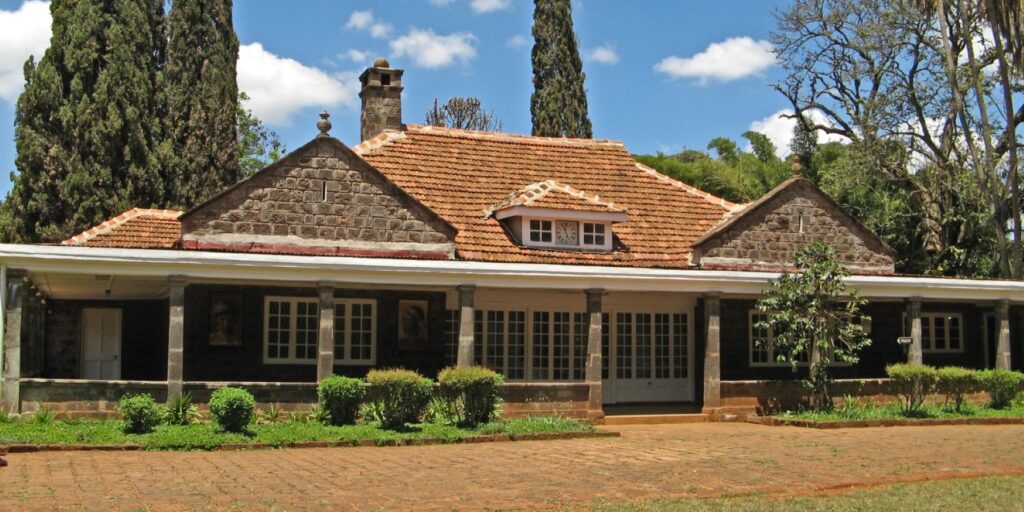
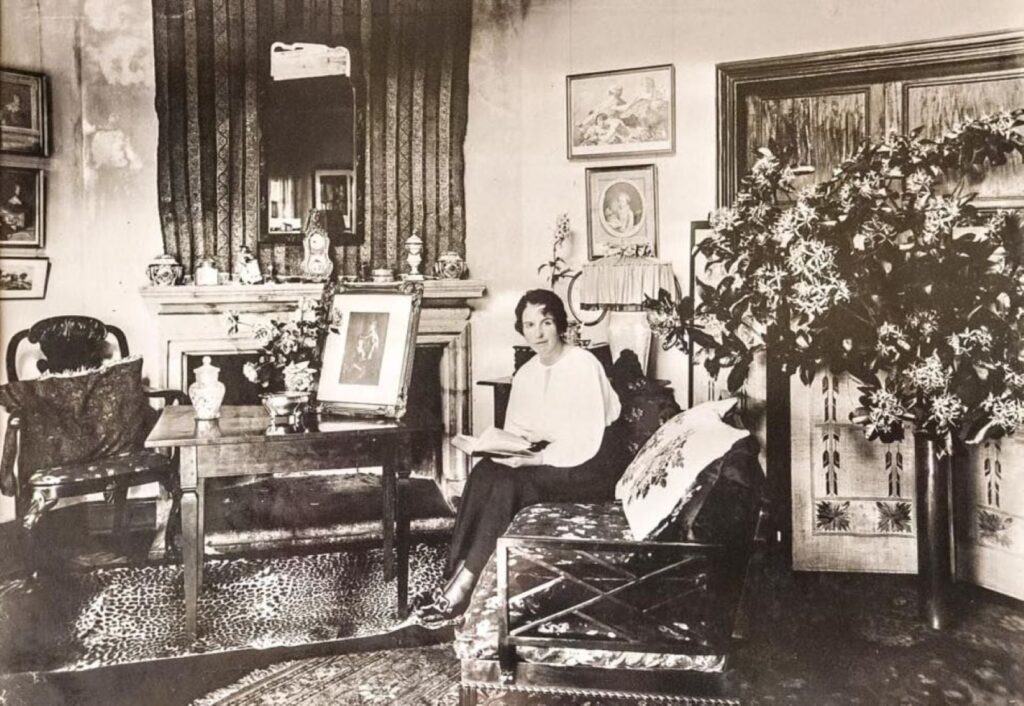
Blixen’s home; Blixen in her home
To briefly encapsulate her life, she born into a wealthy Danish family and married a Swedish cousin, a baron, in 1914 when she was 29. Both were adventurous, so a mutual uncle bankrolled the purchase of land in Kenya for a coffee plantation. Hubby turned out to be a serial womanizer, and he got bored with the plantation, which never was successful. They divorced in 1925 although he left years earlier. This was about three years after she started her own long-term love affair with pilot Denys Finch Hatton. They basically lived together while she was still, on paper, a married woman. Sacre bleu! When he died in a plane crash in 1931, she sold the farm and moved back to Denmark at 46 years old.
It wasn’t until then that she began writing in earnest. Isak Dinesen was one of several pseudonyms she used, in a prolific career that included a number of novels and books of short stories. The memoir ‘Out of Africa’ was about her years in Kenya, centering on her relationship with Hatton. One of her short stories, ‘Babette’s Feast,’ was made into a luminous film in in 1987. I still remember how much I was moved by it. She was nominated three times for a Nobel Prize in Literature, coming in third behind Graham Greene in 1961 and losing the top spot to John Steinbeck in 1962. I mean, really, did you know all this stuff? I certainly didn’t. Not only is her home in Nairobi, bought by the Danish government and gifted to the Kenyan government, a museum but so is her home in Denmark.
Her home in Nairobi is lovely, in the African tradition of a sprawling one-story house, with a sweeping porch, outdoor walkways, and large rooms. She was also a painter and her artwork is seen throughout the house. Turns out she doubled as a nurse of sorts to the workers on the plantation, and had a dispensing cupboard in the dining room with various medicines and herbal remedies. Bits and pieces of Streep’s and Redford’s costumes are on display, to boot. I thought it was well worth the visit. I also had a one-on-one guide, presumably because I was the only one there at the moment, who was highly informative and very personable. My one deep regret of the visit is that I did not tip her when I left. I was not sure of the local protocol, but that should not have stopped me.
The entrance fee to the museum is 1200 Kenyan shillings, $9.25, €9. They almost didn’t let me in because I didn’t have my passport, but I think I looked so forlorn they gave me a break. Just a word to the wise.
Lake Naivasha: We did make one excursion outside of Nairobi to Lake Naivasha, long a popular getaway for folks looking to get out of the city. On a good day, it’s about 2 hours away, although we got stuck in pre-Christmas traffic and it took much longer. We passed Kenyan tea country on our way, huge estates recognizable by the densely planted bright green tea bushes. Kenya is one of the largest tea exporters in the world, turns out, along with China, India and Sri Lanka. Next time I visit Bridget, I would love to tour an estate.
As we approached Lake Naivasha, one holiday enclave after another in almost a dizzying array dotted the road beside it, so it’s a good thing Bridget and Tom have friends who have been there and recommended a place to stay. Sanctuary Farm is unlike any place I’ve been to before. For one thing, it is a 450-acre wildlife sanctuary, so it would not be at all unusual to see a zebra in your back yard when you wake up in the morning. For another, there are only 5 guest houses scattered over the reserve, sleeping between 2 and 11 guests and designed by the architect son of the owner. We stayed in a two-bedroom bungalow, significant because one wall of corrugated steel lifts on pulleys in sections, so the outside is literally brought into the livingroom. The price was very fair, I thought, $210/€203 a night – and that was just before Christmas.
Now, of course, there were add-ons, each with separate price points:
*The farm-to-table restaurant serves a three-course fixed price evening meal of organic food, which was delicious and if I remember correctly cost less than $130 for three.
*I am so glad that we took a boat ride on the lake. Our driver slowly circumnavigated Crescent Island, an island game sanctuary, so that we could enjoy the fabulous shore birds and wildlife that make their home there. The cost was +/- $/€30 an hour for up to six people. (We had hoped to go to the sanctuary, but arrived too late in the day to justify the admission cost of $33 per person. Apparently, you can explore the island yourself or go on a tour. And there’s also three, pretty big houses there where you can stay.)
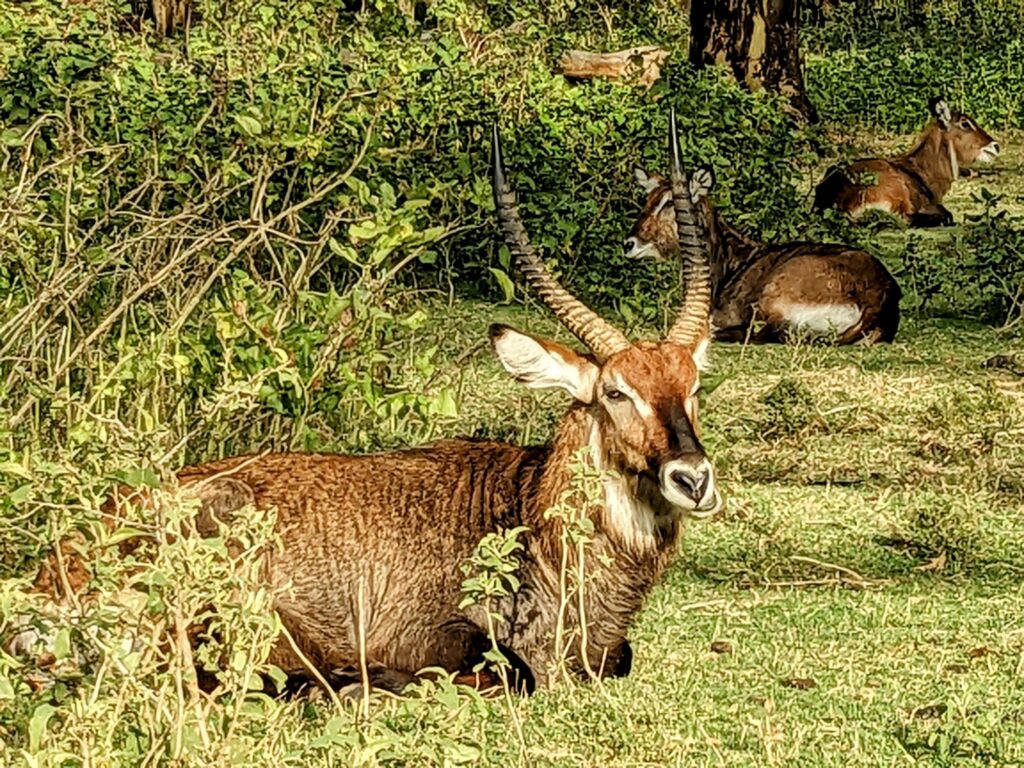
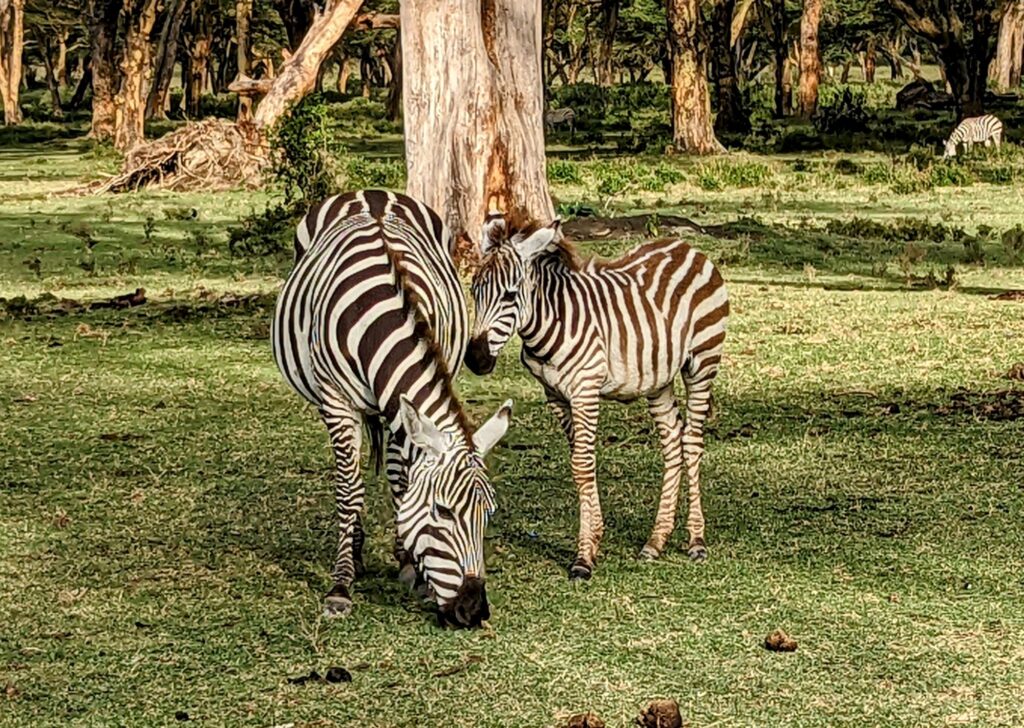
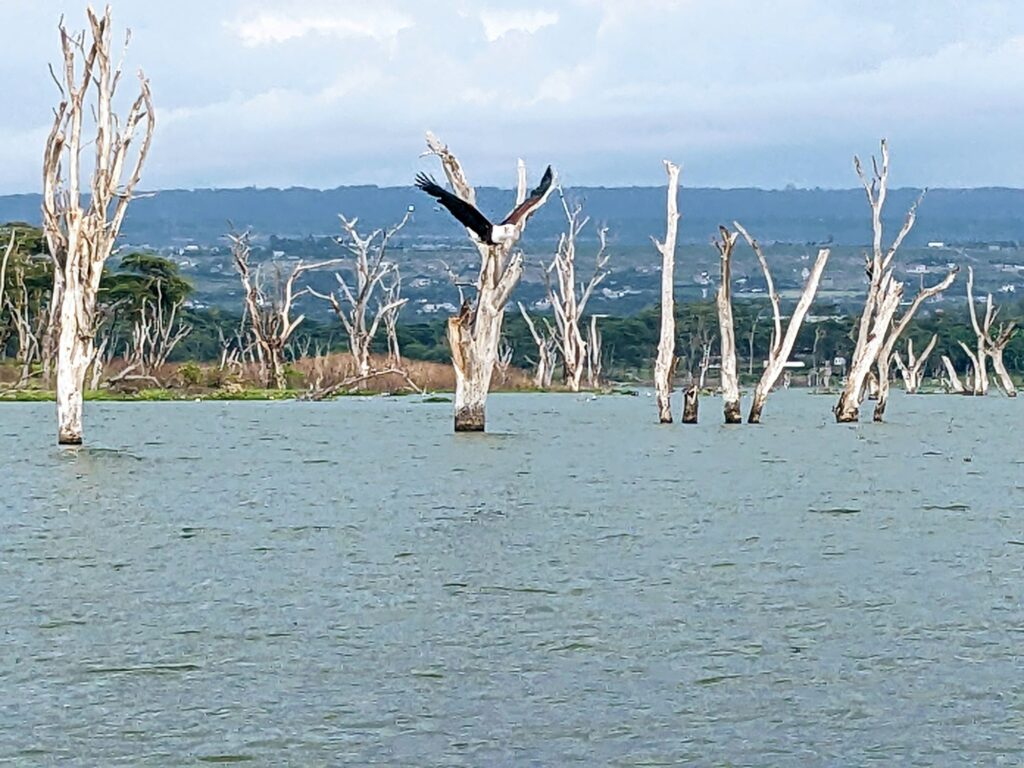
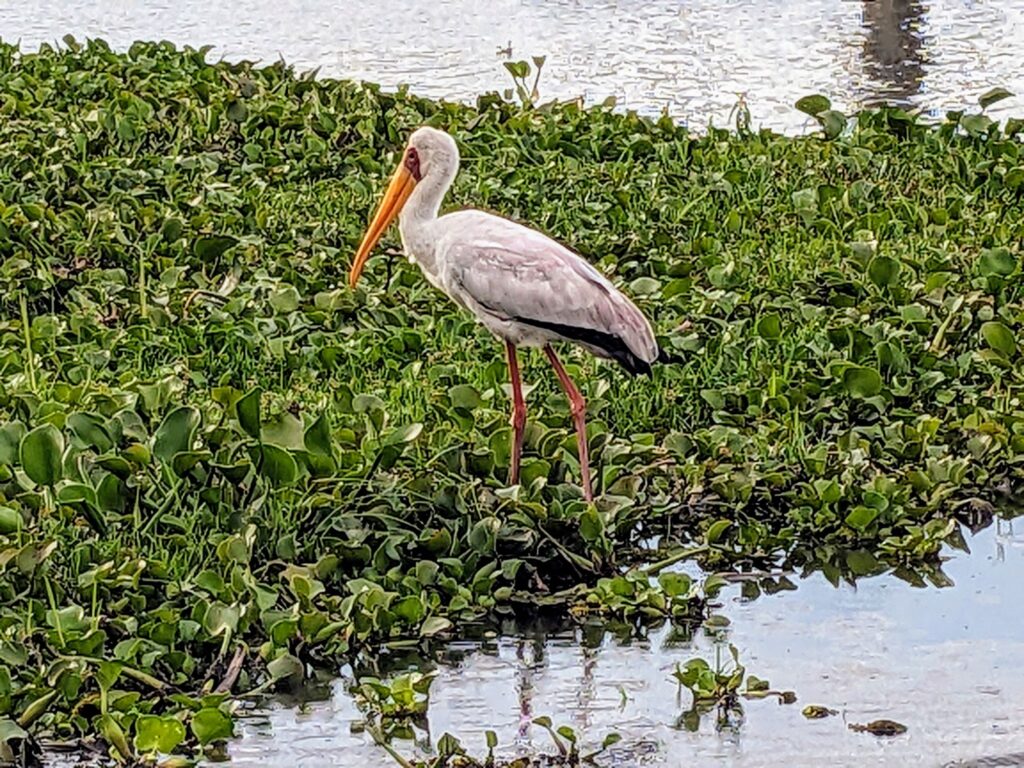
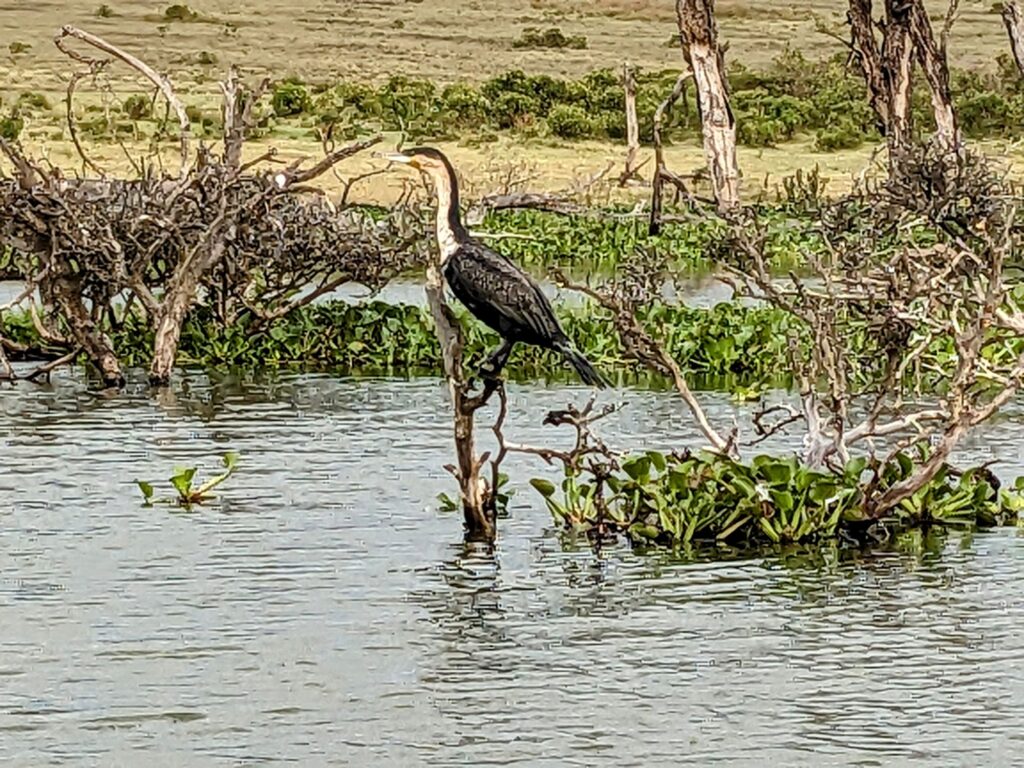
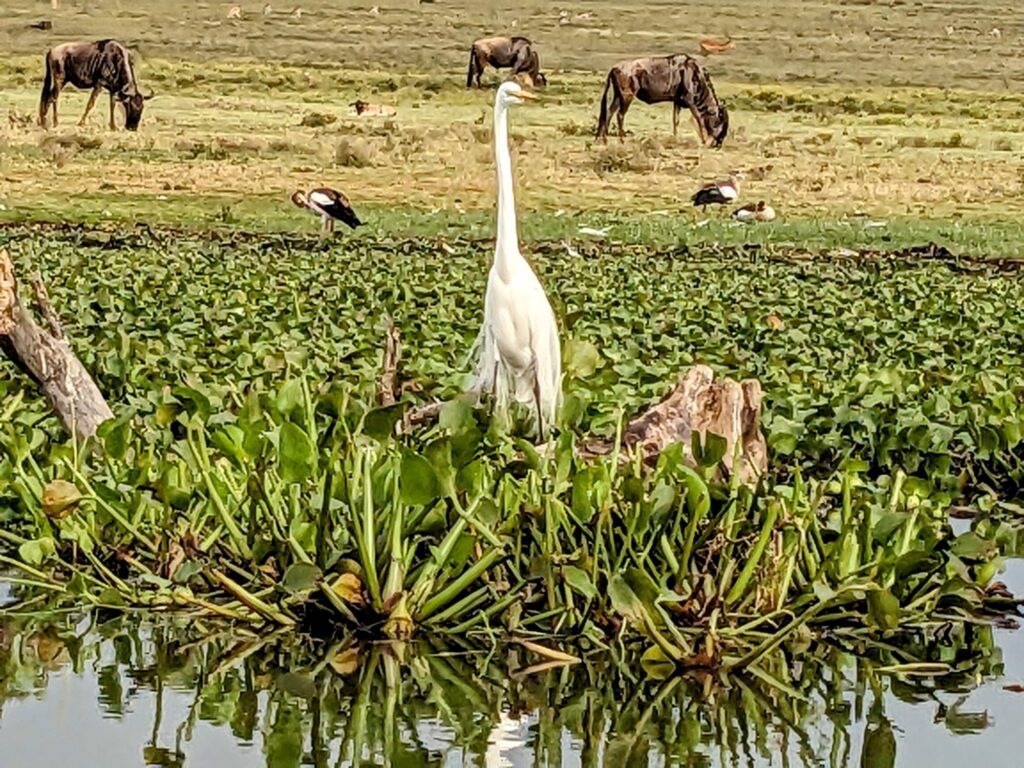
From top left: A waterbuck; zebra mom and babe; a fish eagle; a yellow-billed stork; a great cormorant; a great egret (with wildebeests and I think some sort of duck in the background).
*There’s also a pretty substantial stables on the grounds, so Bridget and I decided to take a tour of Sanctuary Farm on horseback. Pretty cool way to see the wildlife, for sure. We even meandered over to our bungalow, where Tom and Flynn greeted us. The cost was roughly $/€40 for an hour. Other amenities include bike rentals and a night game drive (!). (BTW: For some reason, the Sanctuary Farm website was down when I tried to access it, but it’s easy to find on a search. The website is www.sanctuaryfarmkenya.com)
I am going to digress here to share a bit of racy, drug-drenched history that involved not only Lake Naivasha but Karen Blixen and both of her men. When I came back from Blixen’s house, I was pondering aloud whether she had much of a social life. Tom, my go-to source for colonial British history in Africa, immediately perked up. Oh yea, he said, she was part of the Happy Valley crowd. This of course sent me scurrying for my computer, and boy oh boy, what I learned!
These guys, mostly British and Anglo-Irish aristocrats with much more money and time than sense, came to Kenya during the teens and Roaring 20s of the 20th century. They settled around Lake Naivasha and environs, where they lived truly a dissolute and hedonistic life. Let me tell you, I am a product of the American 60s, and I’ve seen and probably done it all. But these guys almost make me blush and surely make me sad. These earls and barons and ladies and counts were “relentless in their pursuit to be amused, more often attaining this through drink, drugs and sex.” This quote comes from the grandson of Baron Blixen, Karen’s husband, who along with Karen and Denys Finch Hatton were regulars at the estates of these aristocrats. Apparently lots of orgies, lots of hard liquor, heroin, cocaine, morphine, scandals, new wife- or husband-hunting, at least one murder suspect, overdoses, eventual suicides, and on. Really. Quite the white colonial legacy, wouldn’t you say?
So, I think it’s time for a wrap. One final thought. It always makes my heart sing when I visit my daughter in Africa. Most of her friends and acquaintances are doing good, necessary work for international NGOs or the United Nations. They come from all different countries and cultures, but are united by their desire to help others and by a fearlessness of living in far-flung places of the globe. Sure, there’s bureaucracy; sure, there can be frustrations. But at a time when the world is so precarious, it’s a comfort to me to be reminded that there are people in the world who lead from their hearts.
And, need I say it, my perfect grandson was perfectly wonderful…
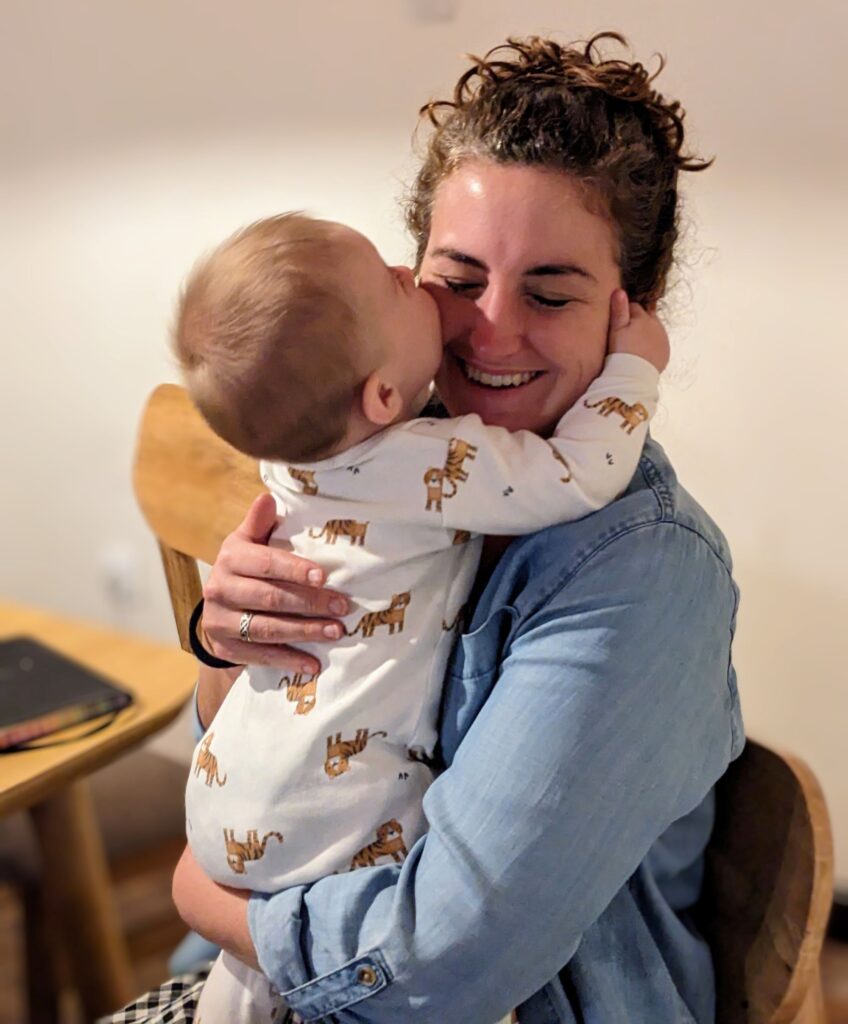
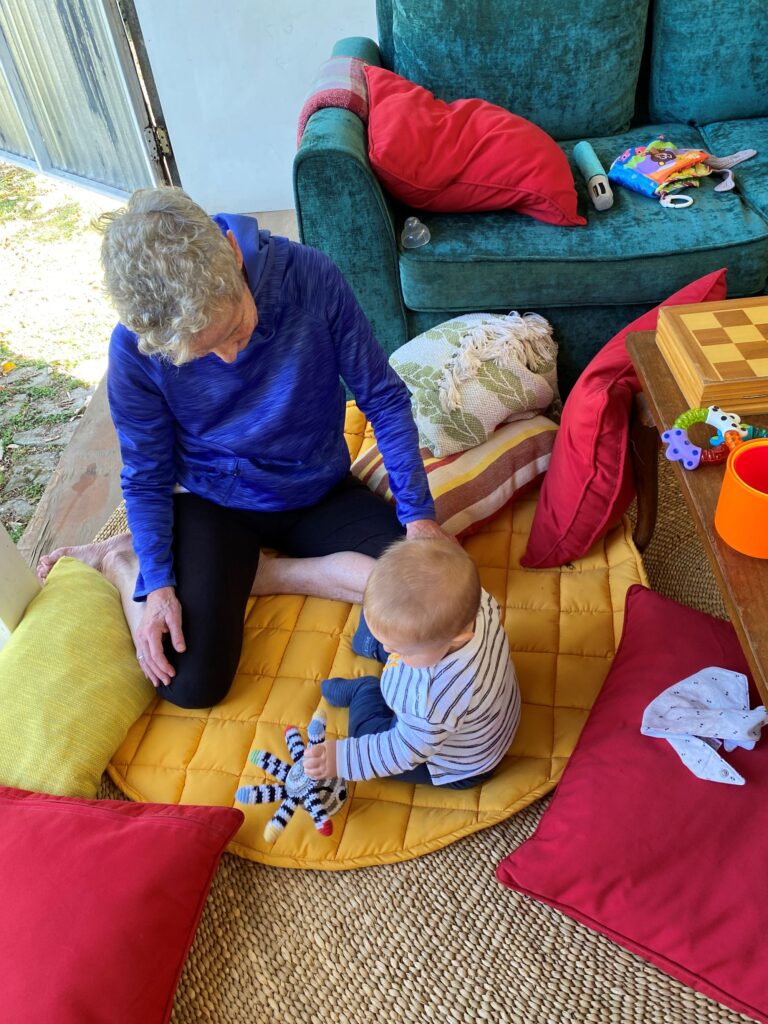
THE CUTEST photo of Flynn kissing his mother; me playing with Flynn at the bungalow at Sanctuary Farm.
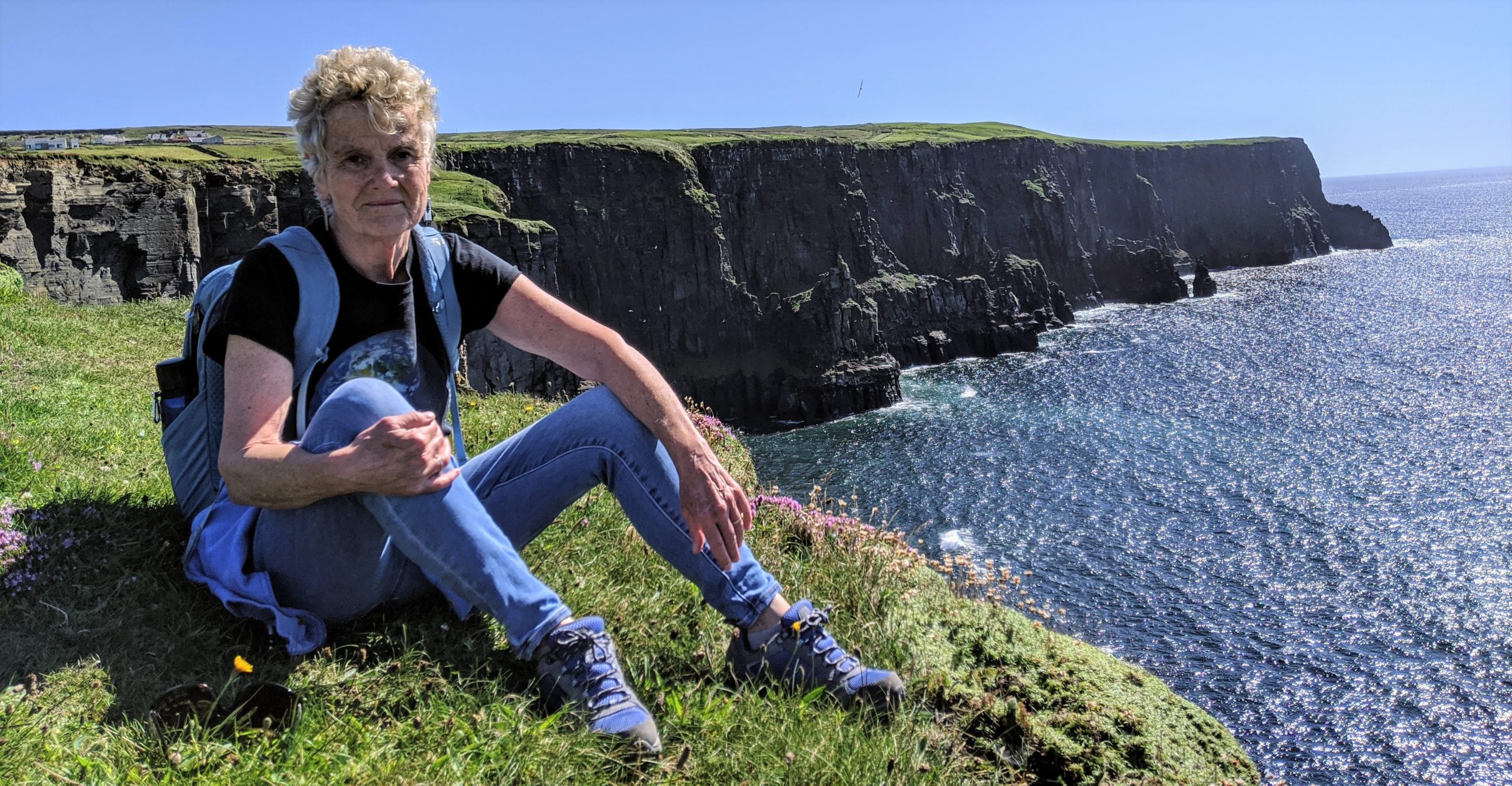
Reader Comments
We will get you out and about for more adventures next time mom! And of course anyone is welcome to come, you have a home in Kenya
Lovely adventures, well done. Whets my appetite for travel and to see my these fascinating creatures meet the people. Wonderful you can spend time with Bridgett and your grandson, too.
Love your visit to Nairobi, a place I will unfortunately never experience in the flesh. Your descriptions and tips will undoubtedly help those who will. How sweet to be with Bridget, Tom and Flynn for the holidays!
A marvelous personal tale recounting a beautiful visit to Flynn, Bridget and Tom. And the details you’ve added to subjects that are familiar, but only having come to me with shallow information. Thank you, Deborah!! A perfect travelogue about a place and decades that have always fascinated me.
I also really appreciated your wrap-up about the ideals that motivate Bridget, Tom and their friends. Best to you all!
Loved reading about your adventures and your grandson. What a wonderful trip. Thanks for all the travel tips, although I probably won’t be using them.
Wonderful descriptions and photos, Deborah!
Also, makes me want to see Out of Africa again…despite Isak Dinsen’s rather sordid lifestyle
How wonderful! Such precious family time . Such salacious details of the colonists!
. Such salacious details of the colonists!
Living your best life, Deborah. Thanks for sharing.
Fascinating, descriptive, mesmerizing as always, Deborah. Kazuri beads (the shop here was in Bridgeton), Karen Blixen (I remembered immediately who she was), giraffes (my favorite animal), city and sanctuary (stunning picture), Sanctuary Farm, Flynn…..whew! I love that you share this with us.
You are living the dream, my friend. I am really happy for you, and I love reading about your adventures. Karen
Love the descriptions of everything. Fascinating !
This was great Deborah! It was nice to see you,Bridget, and Tom in pictures. And of course the whole thing was well written. Take care, H
Beautiful blog! So great to see Bridget and Flynn! My mom and her husband spent every New Year’s Eve with friends watching Babette’s Feast! Now I’ve taken up the ritual!
Gah! I so very much want to visit there! So glad you were able to see so much and spend quality time with Bridget, Tom & Flynn.
Wonderful having you here in our new “home” mom! Next time we will get out and about for more adventures around the country
So happy you got to be with your family! Special times to always be treasured…